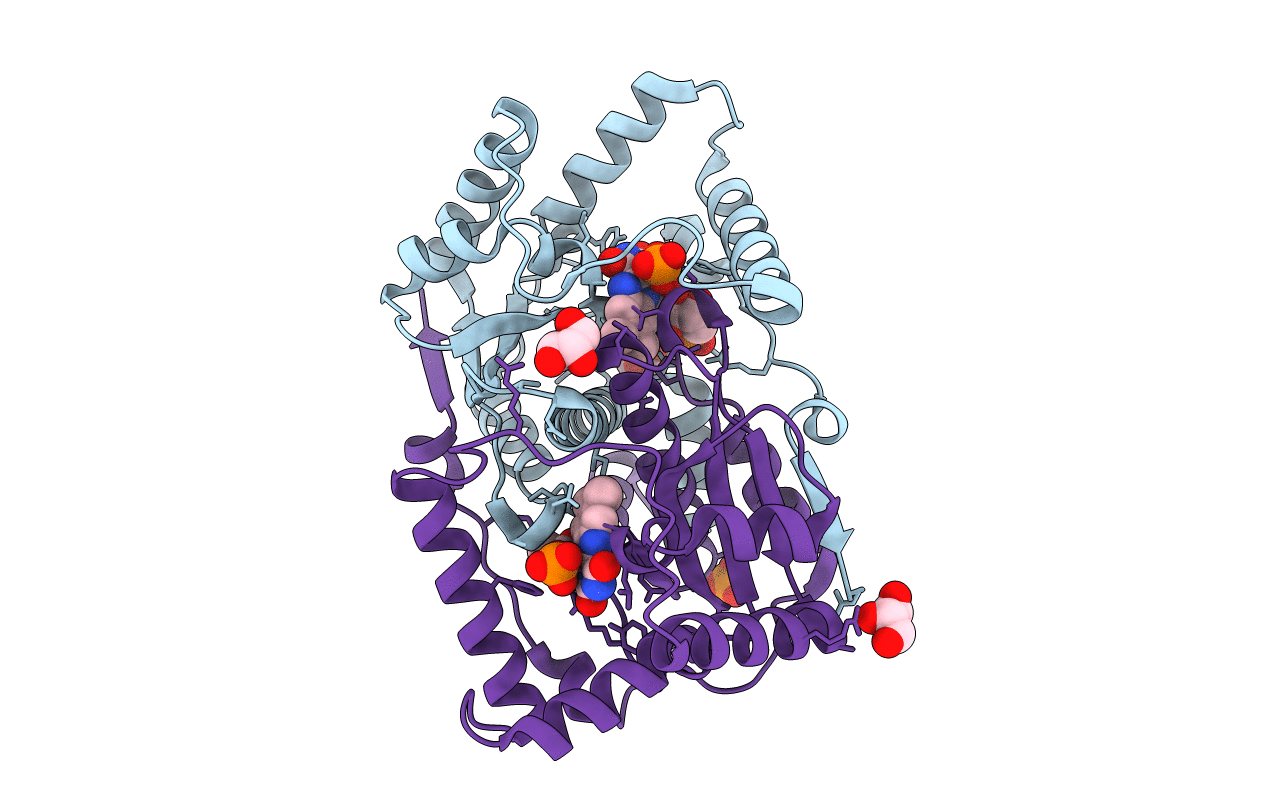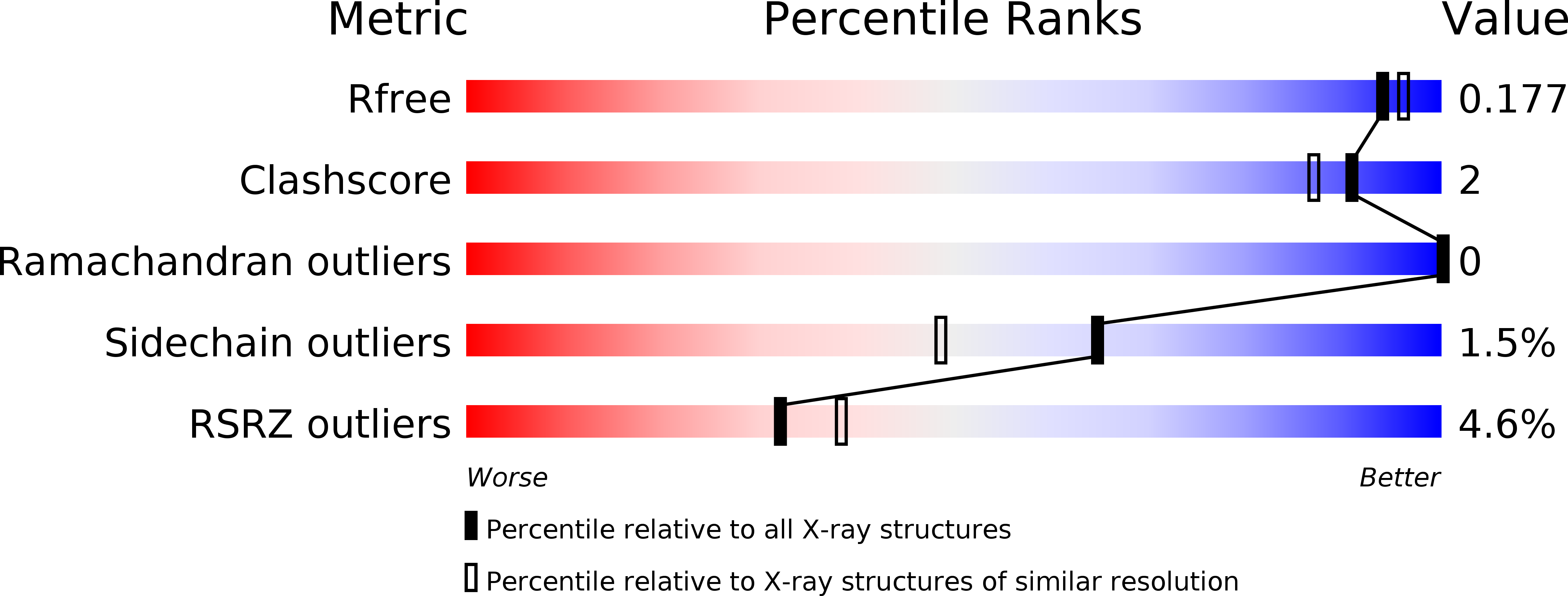
Deposition Date
2009-12-03
Release Date
2010-07-14
Last Version Date
2024-11-06
Entry Detail
PDB ID:
2WZV
Keywords:
Title:
Crystal structure of the FMN-dependent nitroreductase NfnB from Mycobacterium smegmatis
Biological Source:
Source Organism:
MYCOBACTERIUM SMEGMATIS (Taxon ID: 246196)
Host Organism:
Method Details:
Experimental Method:
Resolution:
1.75 Å
R-Value Free:
0.17
R-Value Work:
0.15
R-Value Observed:
0.15
Space Group:
I 21 21 21


